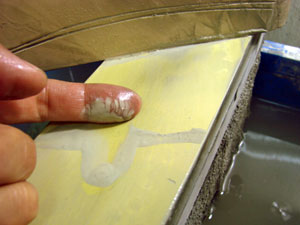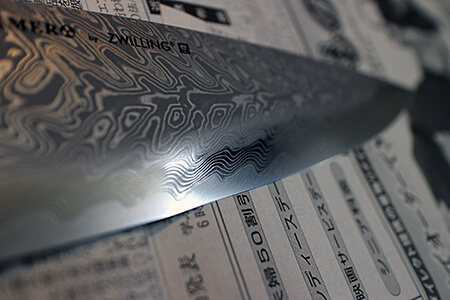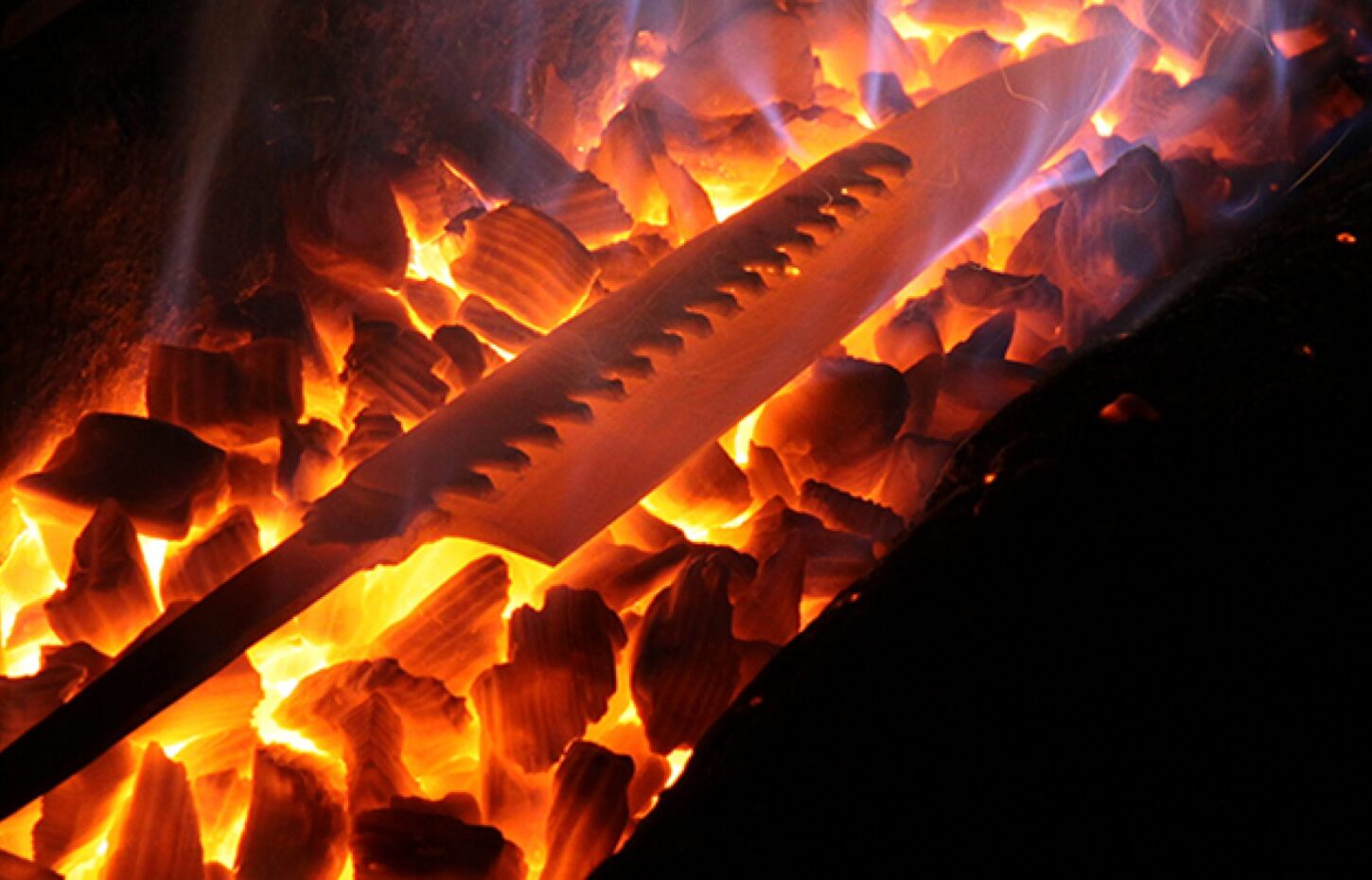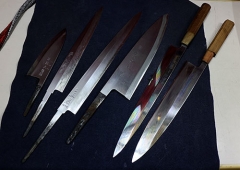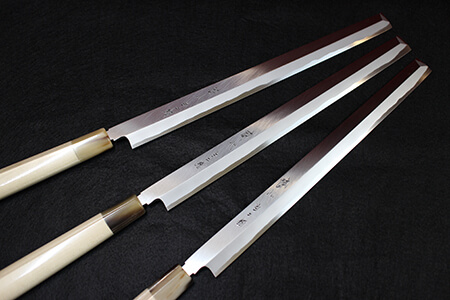Compatibility Plus
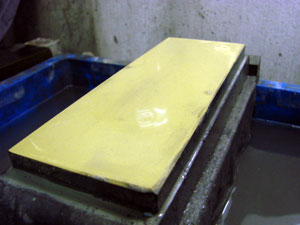
Lately, I’ve been exploring the compatibility between knives and sharpening stones. Fundamentally, things haven’t changed much, but there are nuances between knives that thrive with Itohiki and those that shine with a traditional flat grind. It’s a complex interplay of affinities.
I’ve also started paying attention to the cutting distance, although to truly test it, I need to cut through ingredients. This will be a challenge for later.
For knives like Yanagiba, it’s often best to utilize the entire blade (the entire length of the edge). In other words, it’s about ensuring a smooth edge that won’t cut unless you use the full length. I’m conscious of affinities that align with efficient cooking, cutting effectively with just one-third of the blade length. And no, it’s not just about making it rough!
You might be wondering, ‘Why is a knife seller thinking about all this?’ Well, it’s because, somehow, the experience of being a knife dealer comes in handy. Not every chef spends hours sharpening knives. Some chefs say, ‘#1000 is enough!’ or ‘#2000 is sufficient.’ From a knife seller’s perspective, going up to #6000 or #3000 could make the cutting even smoother, but I understand that chefs don’t always have the time.
I’m trying to fill that gap, thinking, ‘What if everyone could sharpen this way in a short time?’ Well, from a knife dealer’s perspective, sharpening aggressively at #1000, wearing it down quickly, and then having customers buy a new knife is also a source of happiness (lol).
hibishugyo
- 2007-10-16
